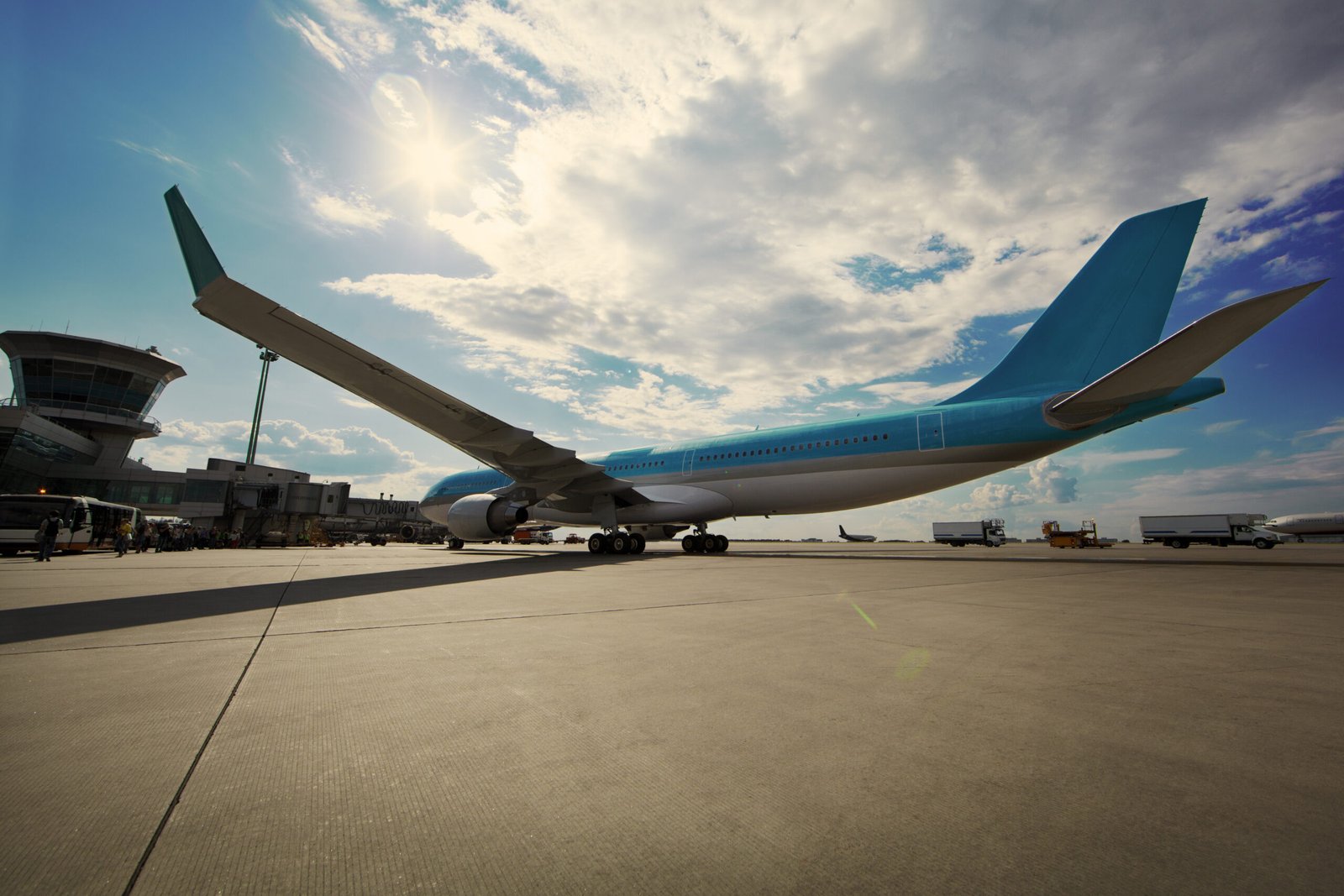Aviation Resources
From Biplanes to Drones: The Evolution of Flight Through the Ages
Aviation has always been a field that captivates the imagination, marking significant milestones in human innovation. From the rudimentary biplanes of the early 20th century to today’s sophisticated drones, the evolution of flight is a remarkable journey filled with technological advancements and educational opportunities. As we continue to explore this fascinating domain, aviation schools have become essential in shaping aspiring aviators and enthusiasts.
When it comes to aviation education, various types of courses cater to different interests and career goals. For those looking to become pilots, traditional flight training programs offer comprehensive curricula that cover everything from basic flying skills to advanced navigation techniques. Many schools also provide specialized courses for commercial pilots, instrument-rated pilots, and even airline transport pilot (ATP) certification.

In addition to pilot training, there are programs focused on aircraft maintenance and repair—these often include hands-on experiences in workshops or hangars where students can work on real aircraft. Similarly, air traffic control programs equip students with vital skills needed for managing air traffic safely and efficiently. With the rise of unmanned aerial vehicles (UAVs), many aviation schools now offer drone piloting courses as well as UAV operations management classes.
To stay connected and informed about aviation trends, numerous blogs and websites serve as valuable resources for both professionals and hobbyists alike. Notable blogs like “The Aviation Herald” provide insights into aviation safety issues through detailed accident reports while “AirlineReporter.com” offers captivating stories about airline travel experiences combined with industry news. Websites such as “Flying Magazine” host extensive articles covering various topics from aircraft reviews to pilot tips.
Social media platforms further enhance community engagement within the world of aviation. On Instagram, accounts like @aviationdaily showcase breathtaking aerial photography alongside informative infographics about aircraft specifications or flying tips. Meanwhile, Twitter boasts active discussions among aviators under hashtags such as #AvGeek or #PilotLife which allow users to share their experiences instantaneously.
For those seeking formal training in America, FAA-approved flight schools are a crucial part of the equation. The Federal Aviation Administration provides a list of accredited institutions that meet stringent standards for quality instruction in both ground school and flight training environments. These schools often feature state-of-the-art simulators that replicate real-life flying conditions without leaving the ground—a perfect tool for honing one’s skills before taking off into the skies.

Flight simulators have revolutionized how pilots train today; they enable immersive practice scenarios ranging from routine flights to emergency situations without risking lives or equipment. Many reputable FAA-certified facilities utilize advanced technology that accurately mimics cockpit layouts along with realistic weather patterns—creating an unparalleled learning environment for prospective aviators.
As we witness continued advancements in aviation technology—from electric planes being designed by visionary companies to autonomous drones performing complex tasks—the educational landscape must adapt accordingly. Whether you’re passionate about becoming a pilot or simply curious about UAV technology, diverse courses are available at various institutions across the country.
In conclusion, exploring the evolution of flight reveals not only technological progress but also highlights how education plays an integral role in shaping future generations within this dynamic field. With countless resources available through blogs, social media sites, FAA-approved flight schools, and specialized training programs dedicated solely to enhancing knowledge around aviation—there has never been a better time to embark on your own aerial journey!
Navigating the Skies: A Beginner’s Guide to Understanding Aviation
Embarking on a journey into the world of aviation can be exhilarating yet overwhelming. With so many paths one can take, it’s crucial to understand the various options available. From specialized schools to an abundance of online resources, this guide aims to illuminate your route through the skies.
### Types of Aviation Schools and Courses
When considering a career in aviation, the first step is selecting the right type of school. Here are some key categories:
1. **Flight Schools**: These institutions focus primarily on training pilots. They offer programs ranging from private pilot certificates to commercial licenses and even advanced ratings for instrument flying.
2. **Airline Transport Pilot (ATP) Schools**: For those aspiring to fly for commercial airlines, ATP schools provide intensive training specifically tailored for airline operations, including multi-engine flying and crew resource management.

3. **Aviation Maintenance Schools**: If you’re more interested in keeping aircraft in top shape rather than piloting them, consider enrolling in an aviation maintenance program. Here, students learn about airframe and powerplant systems, gaining skills necessary for FAA certifications.
4. **Aerospace Engineering Programs**: Universities often feature degree programs focused on aerospace engineering—perfect for those who wish to design and develop aircraft or spacecraft.
5. **Air Traffic Control Training Programs**: These courses prepare individuals for careers as air traffic controllers, teaching them how to manage aircraft safely within controlled airspace.
6. **Simulator Training Facilities**: Many flight schools now utilize advanced simulators that replicate real flying conditions without leaving the ground—ideal for practicing maneuvers or preparing for exams.
### Top Aviation Blogs and Websites
Staying informed about aviation trends is vital for any aspiring aviator or enthusiast. Here are some excellent blogs and websites worth bookmarking:
**AOPA (Aircraft Owners and Pilots Association)**: An invaluable resource packed with articles on flying tips, legal regulations, and industry news.
**Airliners.net**: A vast repository of photographs and forums where aviation enthusiasts share their experiences.
**Flying Magazine**: This publication covers everything from pilot techniques to product reviews.
**Pilot’s Digest**: A blog that offers insights into pilot life while emphasizing safety practices.
**AvWeb**: Focused on news relevant to pilots, AvWeb also features podcasts covering current topics in aviation.
For social media aficionados:
Follow hashtags like #aviationlife or #pilotlife on Instagram for stunning visuals from fellow aviators.
Join Facebook groups such as “Pilots Without Borders” or “Women in Aviation” to network with others who share your passion.
### FAA Flight Schools & Simulators
The Federal Aviation Administration (FAA) maintains a comprehensive list of accredited flight schools across the country—each providing different specialties tailored to student needs. When searching for a suitable school, look out for those that offer both ground instruction and simulator training; these elements combine theoretical knowledge with practical application effectively.

Moreover, utilizing high-quality flight simulators can significantly enhance your learning experience by allowing you to practice critical scenarios without real-world risks involved. Many reputable schools incorporate state-of-the-art technology into their curricula that mimic actual cockpit environments.
In conclusion, understanding aviation is not merely about dreaming of soaring through clouds but involves meticulous planning and education. By exploring various types of schools, engaging with numerous online platforms dedicated to this field, and taking advantage of FAA resources—and perhaps even virtual simulators—you’re well on your way toward conquering the skies! Remember that every seasoned pilot once started just where you are now—so buckle up; adventure awaits!
Flight Safety 101: What Every Traveler Should Know
When it comes to flying, safety is paramount. Understanding the fundamentals of aviation can enhance your travel experience and provide you with peace of mind as you soar through the skies. Whether you’re an aspiring pilot or just a curious traveler, knowing about aviation schools, resources, and regulations will empower you with knowledge that enhances your journey.
*Aviation Schools by Types of Courses**
If you’re captivated by the world of aviation and are considering pursuing a career in this field, numerous educational paths await you. Aviation schools offer diverse courses tailored to different interests:
1. **Pilot Training Programs**: These are foundational for anyone looking to become a commercial or private pilot. Courses typically cover flight theory, navigation, meteorology, and hands-on flight training.
2. **Aircraft Maintenance Engineering**: This program focuses on the technical aspects of aircraft maintenance. Students learn about various systems within an airplane and how to perform inspections and repairs.
3. **Air Traffic Control Training**: This unique course equips students with skills necessary for managing air traffic safely. It covers communication protocols and radar operation.
4. **Aviation Management**: For those interested in the business side of aviation, this course covers airport operations, airline management, and regulatory environments.
5. **Flight Attendant Training**: Focused on customer service and safety procedures, this program prepares individuals for dynamic roles in passenger care during flights.
Each type of course plays a pivotal role in maintaining high standards for safety within aviation.
*Essential Aviation Blogs and Websites**
In addition to formal education, staying informed through reputable blogs and websites is crucial for both travelers and industry enthusiasts alike. Here’s a list that can guide your exploration:
**Airliners.net**: A treasure trove for aviation photography enthusiasts; it also features forums discussing various topics related to flying.
**The Points Guy (TPG)**: While primarily focused on travel rewards programs, TPG offers insights into airlines’ safety records alongside their tips on maximizing travel experiences.
**Flying Magazine**: This publication provides articles covering everything from flight techniques to emerging technologies in aviation.
**Simple Flying**: Stay updated with daily news related to airlines worldwide; they often highlight significant changes in safety regulations too.
Social media platforms can also be rich sources of information:
Follow hashtags like #AvGeek or #AviationSafety on Twitter for real-time updates from professionals.
Join Facebook groups such as “Flying & Avionics” where members share experiences and advice concerning air travel safety.
LinkedIn has numerous professional groups dedicated to discussions around aviation trends, regulations, and best practices.
*FAA Flight Schools/Simulator Training**
The Federal Aviation Administration (FAA) oversees flight training standards across the United States. When selecting a flight school or simulator program, consider these attributes:
1. **Accreditation**: Ensure that any school is FAA-approved; accreditation guarantees adherence to rigorous training protocols ensuring student safety.
2. **Simulator Use**: Modern simulators provide realistic environments without leaving the ground! They are instrumental in teaching emergency procedures safely while enhancing skills before actual flights.
3. **Reputation & Reviews**: Research feedback from former students regarding their training experiences—insights from alumni can reveal invaluable information about a school’s focus on safety measures during instruction.
As travelers embark on their next adventure by air, understanding these facets of aviation not only fosters appreciation but also promotes safer journeys overall. Knowledge is power; equip yourself accordingly! Safe travels!
Sky’s the Limit: Exploring the Most Unusual Airports Around the Globe
When we think about aviation, our minds often conjure images of sleek aircraft slicing through blue skies or bustling terminals filled with eager travelers. However, there’s a whole world beyond conventional airports that captivates the imagination—unusual airports that serve as gateways to adventure and curiosity. While exploring these intriguing hubs, let’s also take a moment to consider how aspiring aviators can prepare for their journeys in this fascinating field.
### Aviation Schools: Charting Your Course
Before you embark on your own airborne adventures, obtaining the right training is crucial. Aviation schools offer a variety of courses tailored to different interests and career goals. Whether you’re dreaming of piloting commercial airliners or managing airport operations, there’s something for everyone:

1. **Pilot Training Programs**: These courses teach aspiring pilots about navigation, meteorology, and flight regulations while providing hands-on flight experience.
2. **Air Traffic Control**: Focused on communication skills and situational awareness, these programs prepare students to manage air traffic effectively.
3. **Aviation Management**: For those interested in the business side of flying, these courses cover airport operations, airline management, and safety protocols.
4. **Aircraft Maintenance Technology**: This program is perfect for individuals who wish to delve into maintaining and repairing aircraft systems.
5. **Flight Dispatching**: Students learn how to plan flights meticulously while ensuring compliance with safety standards.
With such diverse offerings, aspiring aviators have numerous paths available to them!
### Navigating Online Resources
In today’s digital age, staying updated on aviation trends has never been easier. Numerous blogs, websites, and social media platforms cater specifically to aviation enthusiasts:
**Aviation Blogs**:
– *AirlineReporter*: A blog focused on airline reviews and industry news.
– *The Points Guy*: Ideal for frequent flyers looking for tips on maximizing travel rewards.
– *Flying Magazine*: Offers insights into pilot training along with gear reviews.
**Websites**:
– *FlightAware*: Provides real-time flight tracking data.
– *SkyVector*: A fantastic resource for pilots needing sectional charts.
– *AOPA (Aircraft Owners and Pilots Association)*: Great for general aviation news and resources.
**Social Media Sites**:
– Instagram accounts like @aviationdaily showcase stunning aircraft photos from around the globe.
– Twitter users such as @flightradar24 tweet live updates about airline happenings.
These platforms not only keep you informed but also connect you with fellow aviation enthusiasts!
### FAA Flight Schools & Simulators
If you’re ready to take your first steps toward becoming a pilot or enhancing your skills further, FAA-approved flight schools are where you want to be! They provide structured training programs aligned with federal standards. Many offer simulator experiences that allow students to practice flying without ever leaving the ground—a cost-effective way to gain valuable experience before taking off in an actual plane.
Simulators range from basic setups resembling small cockpits to advanced full-motion devices replicating commercial airliner environments. These tools are invaluable; they allow learners to navigate various scenarios safely—from routine operations to emergency situations—without risking lives or equipment.
### Conclusion
As we explore the most unusual airports worldwide—like those perched precariously on mountaintops or surrounded by stunning landscapes—we’re reminded that aviation is much more than just flying; it’s about community engagement and continuous learning. The sky truly is the limit! With quality education options available through various aviation schools and abundant online resources at your fingertips, embracing this exhilarating field has never been more accessible. So whether you’re planning your next trip from an extraordinary airport or gearing up for a career in aviation, remember—the adventure awaits!
Navigating Turbulence: How Aviation Adapts to Global Challenges
In a world where uncertainty and change are constants, the aviation industry continues to demonstrate remarkable resilience and adaptability. From evolving technological landscapes to shifting regulatory frameworks, the sector faces numerous challenges head-on. Central to this evolution is education, which plays a pivotal role in preparing the next generation of aviation professionals.
*Aviation Schools: Types of Courses**
Education in aviation is as diverse as the field itself. Various schools offer specialized programs that cater to different interests and career paths. Here’s a breakdown of some common types of courses available:

1. **Pilot Training Programs**: These are perhaps the most well-known offerings, encompassing private pilot licenses (PPL), commercial pilot licenses (CPL), and airline transport pilot licenses (ATPL). Students learn not just how to fly, but also about navigation, meteorology, and aircraft systems.
2. **Aircraft Maintenance Engineering**: For those inclined towards technical expertise, these courses focus on maintaining and repairing aircraft systems. They cover everything from jet engines to airframe structures.
3. **Air Traffic Control Training**: Aspiring air traffic controllers undergo rigorous training that includes simulations and real-time decision-making exercises to ensure safe skies.
4. **Aviation Management Programs**: These courses prepare students for administrative roles within airports or airlines, focusing on operations management, finance, marketing, and human resources specific to aviation.
5. **Unmanned Aerial Systems (UAS)**: With the rise of drones in commercial applications—from delivery services to agricultural monitoring—these programs teach students how to operate and manage UAS effectively.
Each type of course equips individuals with unique skills tailored for various sectors within aviation.
*Aviation Blogs, Websites & Social Media Sites**
Staying informed about industry trends is crucial for aviation enthusiasts and professionals alike. Here’s a list of noteworthy blogs, websites, and social media platforms dedicated to aviation:
**Airliners.net**: An extensive online community showcasing photographs and discussions surrounding various aircraft.
**The Points Guy**: This blog covers travel tips, loyalty programs, and airline reviews—perfect for frequent flyers seeking insight.
**Flying Magazine**: A treasure trove for pilots featuring articles on flying techniques, safety tips, gear reviews, and more.
**FlightAware.com**: Offers real-time flight tracking data along with insights into airport operations.
**YouTube Channels like Mentour Pilot & Captain Joe**: These channels provide engaging video content ranging from flight tutorials to behind-the-scenes glimpses at airline operations.
Social media platforms such as Instagram or Twitter also host vibrant communities showcasing stunning aerial photography or sharing personal flying experiences under hashtags like #AvGeek or #PilotLife.
*FAA Flight Schools & Simulators**
The Federal Aviation Administration (FAA) plays an integral role in regulating flight schools across the United States. FAA-approved flight schools maintain rigorous standards ensuring quality education in piloting techniques as well as compliance with safety regulations.
Many schools now incorporate advanced simulators into their curriculum—enabling students to practice flying in highly realistic environments without the risks associated with actual flights. These simulators range from basic setups mirroring small aircraft cockpits all the way up to full-motion simulators simulating large commercial jets.
As global challenges continue to shape industries worldwide—from climate change initiatives prompting greener technologies in aviation vehicles to navigating post-pandemic recovery—the educational backbone provided by diverse aviation courses ensures that professionals are ready for whatever turbulence may lie ahead.
In conclusion, through innovative training programs and robust online resources combined with FAA oversight on flight education standards—even amidst adversity—the world of aviation remains steadfastly airborne!



